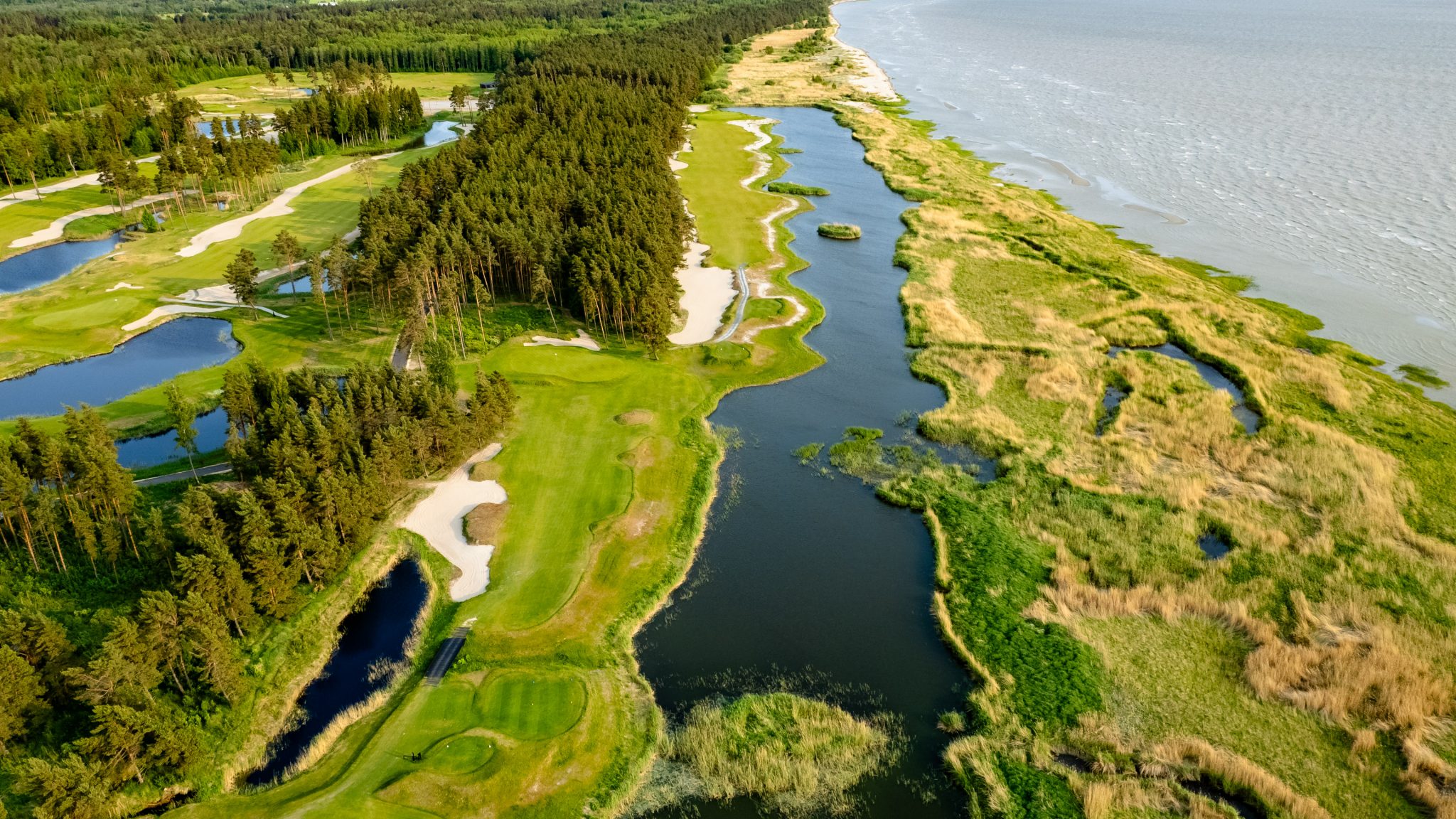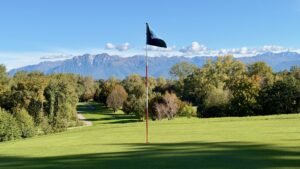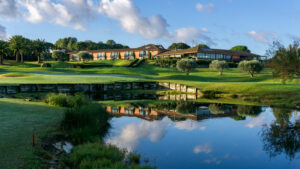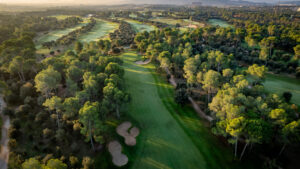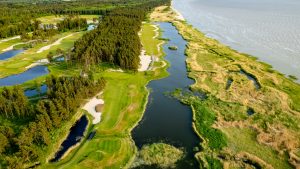This week we explore the fairly unknown golf country of Estonia. We are pleasantly surprised by what we find.
Small grapes often lead to better wines. Those that have grown under tougher conditions become small but very flavorful grapes that in turn create more complex and flavorful wines. Maybe the comparison is a bit lame, but Estonia reminds me of the small grapes. The country is small, about the same size as Denmark, and with only 1.3 million inhabitants, and the number of golf courses is not large. But the courses that exist are like small grapes very tasty. We have decided to test a selection of the best wines courses for a few days.
Tallinn
The majority of all travelers to Estonia arrive first in Tallinn, and so do we. The afternoon flight is short and smooth. And Tallinn Airport is part of the smoothness. The airport is modern with all amenities but at the same time so small that you get from the gate to the baggage claim in a minute. And the distance to central Tallinn is so small that you can walk (but not recommended with a golf bag) and a taxi takes only a few minutes. Those who want to travel a little slower can choose to go by boat from Stockholm. Tallink’s boat departs every evening from Stockholm and arrives in the morning in good time to catch a golf round the same day. Even the port is within walking distance of Tallinn’s city center.
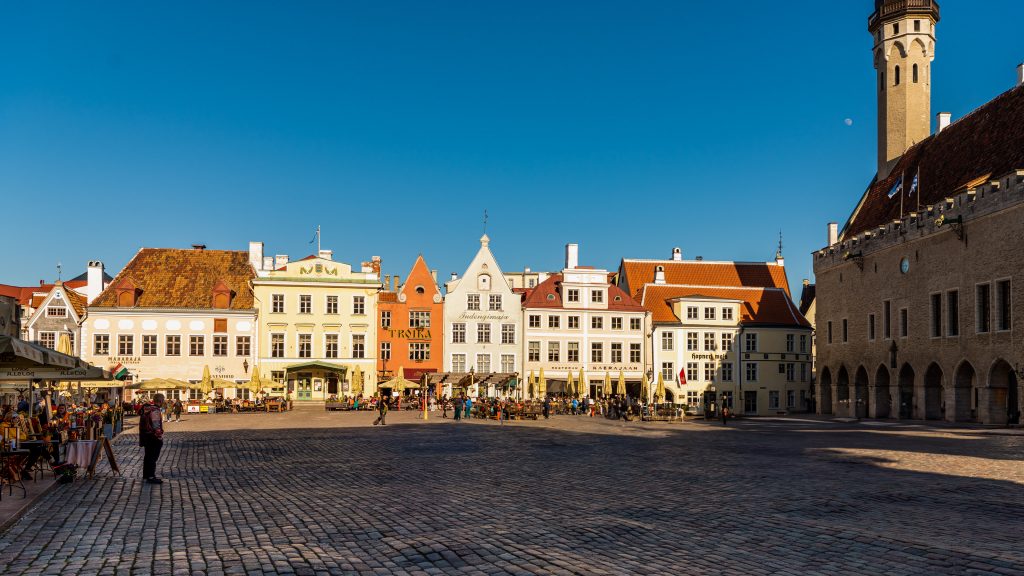
The first thing that strikes you when you come to Estonia is how modern everything is. Those who have never been to Estonia, or been there in the 90s, may associate Estonia with the Eastern Bloc and what it looked like during the Soviet occupation. Nothing could be further from the truth today. Estonia has quickly modernized and is now one of Europe’s leading countries, among other things in digitalization. Everything can be done online, including voting. The only thing that can’t be done via the web is to divorce. Which, after all, seems reasonable.
Central Tallinn is a charming mix of old and new. There are business districts with modern glass towers like in many other big cities, albeit on a smaller scale. At the same time, they have retained the entire old town center. The medieval history is well preserved but at the same time, it is a city where people live and work. The city is alive and is not like in many other places more a museum than a city. Cliché tourist shops are largely missing, instead, there are plenty of small shops that sell Estonian specialties such as linen and amber.
Culinary surprises
After checking in at Hotel L’Embitu in the modern part of Tallinn, it was time for dinner. The choice for the evening was NOA, on the outskirts of the city. The restaurant is beautifully located by the water, with a view back to Tallinn and its now modern skyline.
The food as well as the environment and service was exquisite and far above expectations. The fact that there are not many food pictures says something about the experience, it was so good and beautiful that you simply forgot to photograph. The restaurant’s Michelin star feels very well deserved. Set aside 3 hours for dinner and just enjoy the food, service and presentation.

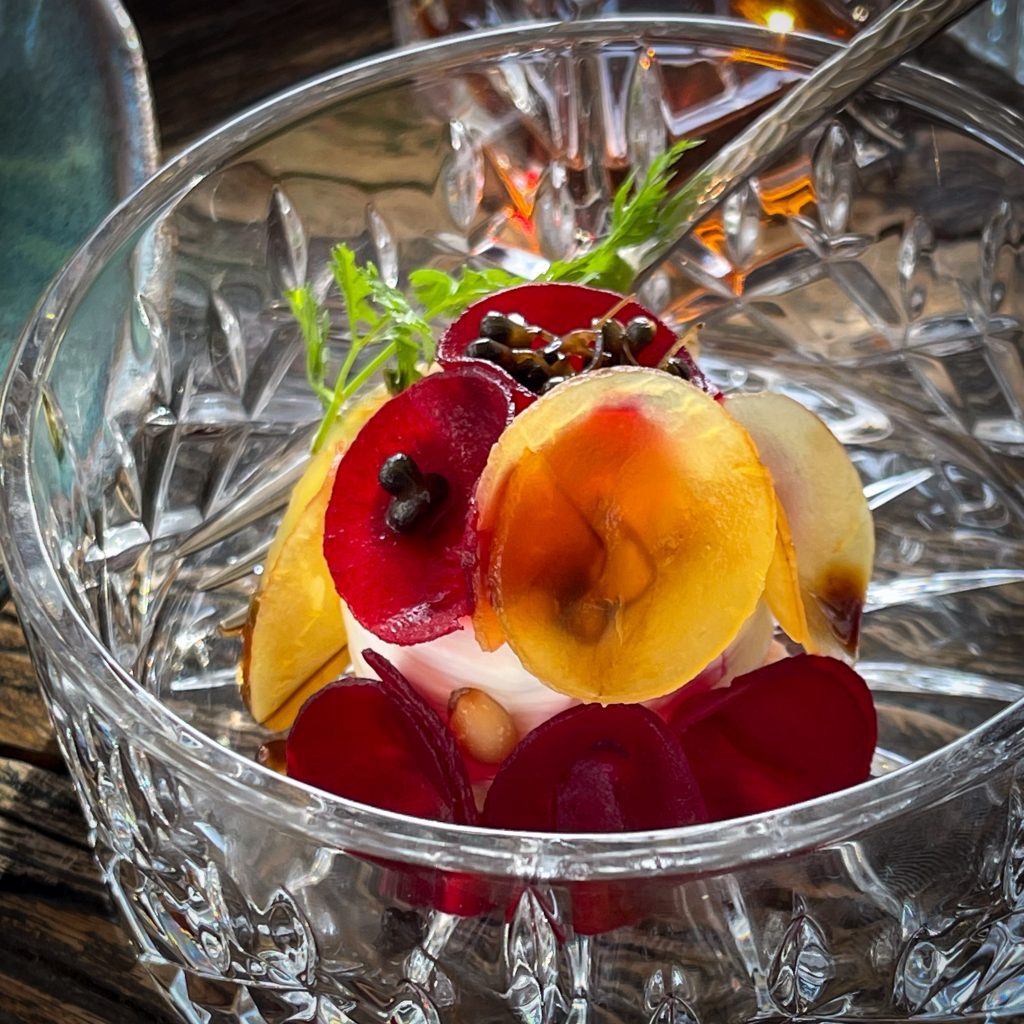
Time for golf
First up is Niitvälja, also called Tallinn Golf Club, located about half an hour west of Tallinn not far from the coast. Niitvälja is the oldest course in Estonia, but since no courses existed at all during Soviet times, it still feels quite new, opened for play in 1994. After a quick warm-up on the range, we set off for play.
Estonia is a fairly flat country, and so is Niitvälja. The course is characterized by a mix of meadow and forest, with many elements of water. The first three holes are in an open landscape, but water comes into play right away, making the holes more interesting. Starting from the fourth hole, the course turns into the forest, and suddenly it feels like we have the course all to ourselves when we play in corridors surrounded by pine forest. The forest is definitely a problem if you don’t stay on the fairway, but the undergrowth is sparse and well-kept so you can easily find the ball and get out. Even the forest holes are often bordered by water, e.g. on hole 7 where you have a long approach with water just in front of the green. The long ninth hole takes us over water back out into open ground and to the clubhouse.
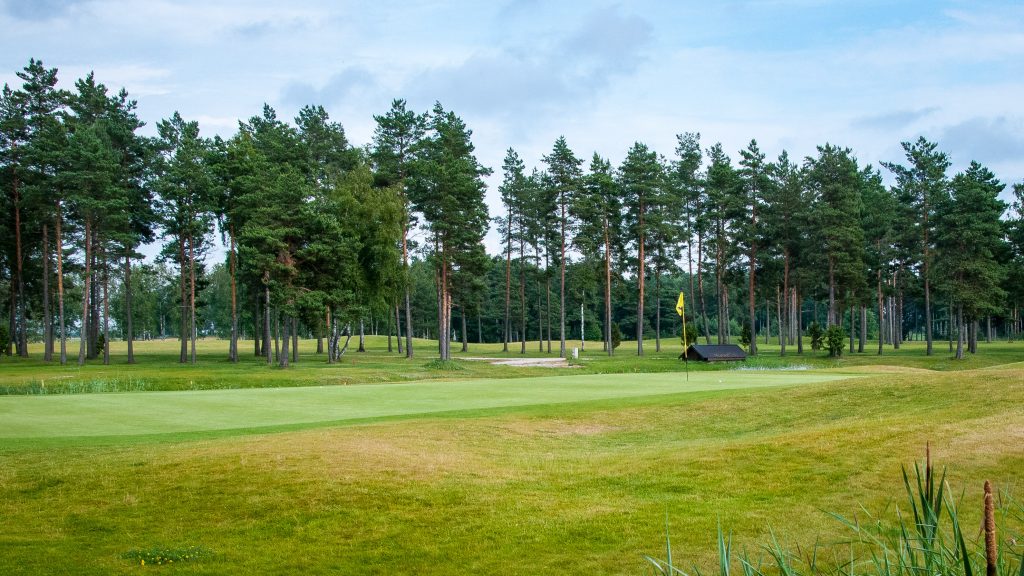
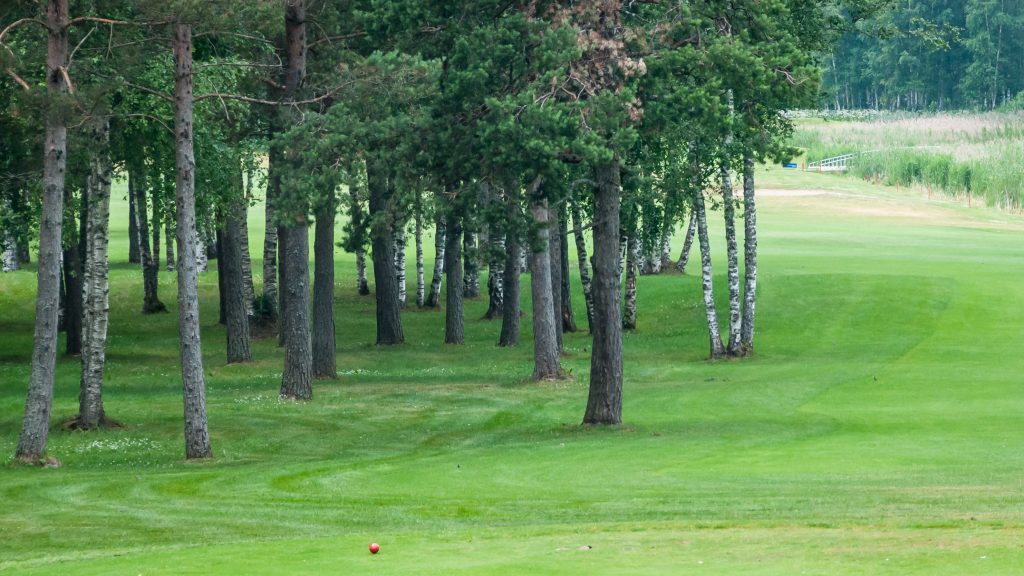
After the break, the tenth takes us back into the forest, quite dense in places, but still with water in play in many places. The biggest water we come to is on holes 13, 14 and 15. The latter two are both played along the water.
Hole 15 is the course’s most beautiful and signature hole. Already on the tee shot, the water is in play and the fairway is narrow as a needle’s eye just in the landing area for the average golfer. On the second shot along the water, it is important to position yourself for the approach, which is towards an island green also surrounded by some bunkers. A very beautiful hole where placement and accuracy are of utmost importance.

All in all, the course was a very pleasant experience. The condition was very good, with nice even greens and fairways in fine condition, despite a very dry spring and early summer. We were impressed, especially considering the many problems we had experienced only days earlier on Stockholm courses (which are on the same latitude) during the spring. Perhaps part of the secret is the grass on the greens, creeping bentgrass, which is ready for play as soon as the snow has melted.
The course was just right difficult. Definitely more of a club course than a championship course, but despite that not without challenges for the better player.

After the round, we had lunch in the clubhouse restaurant. Again, both the food and the service impress in the state-of-the-art clubhouse.
We spent the afternoon sightseeing in old Tallinn, a stone’s throw from our hotel. Half a day is just right to take in the most famous sights.
After the city walk, it was time for another Michelin-nominated restaurant, this time Restaurant 38. Maybe I sound repetitive, but the food was also this evening first-class. A small detail that I have never encountered before was the candles, which when they melted produced butter oil to spread on the bread. It felt a bit unusual to dip the butter knife next to the flame in the candle, but the taste turned out to be perfect.
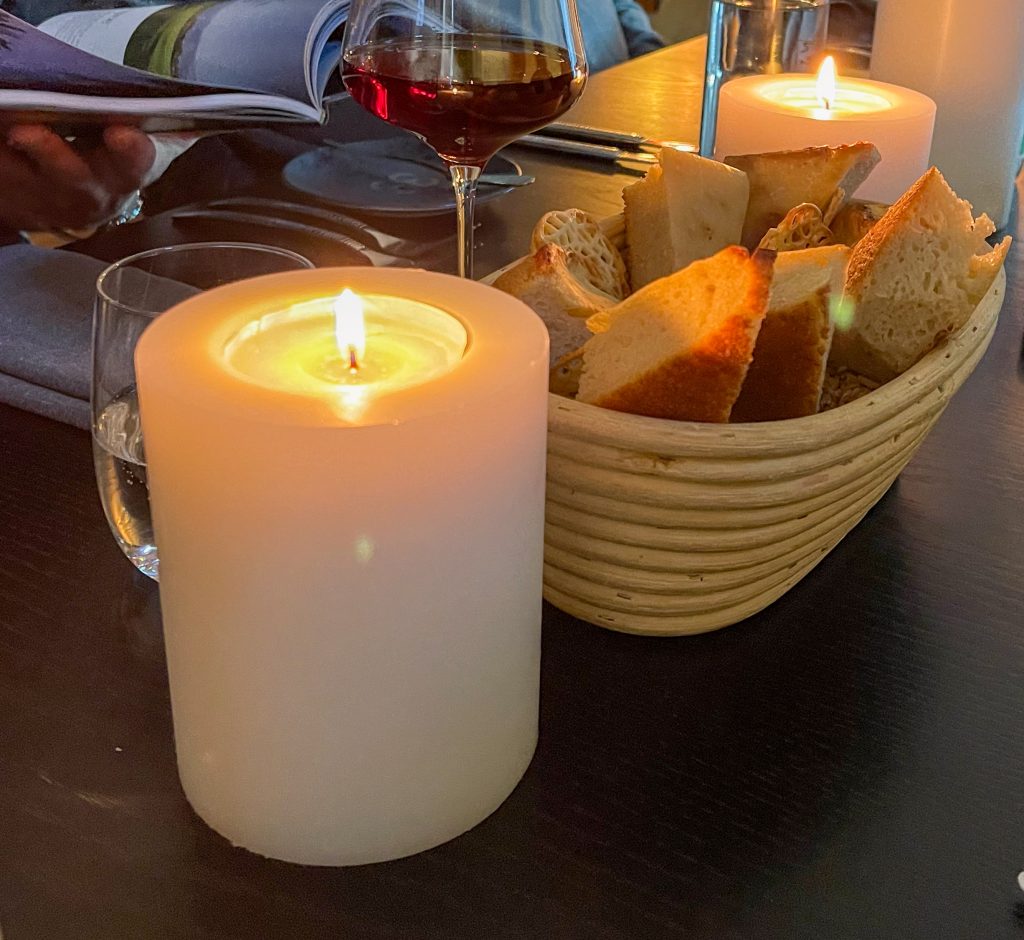

Pärnu next
The morning transfer south through Estonia to Pärnu went smoothly. The main roads in Estonia are excellent and we covered the distance in around 2 hours, arriving in good time for a morning on the golf course.
Pärnu Bay Golf Links is located as you might guess along the water, in the northern part of the Gulf of Riga. The Gulf of Riga is a large, open water so the course is completely exposed to southwesterly winds. Without wind, there is no real links golf, and today we got what we wished for.
Pärnu Bay is a true links course, completely built on sand. Already on the first hole you understand what that means. Miss the fairway and you are in one of the sand bunkers, or “waste areas” if you want to be correct, because all sand is classified that way. In other words, you can ground the club in the sand, and technically you do not need to rake after hitting, although it is of course recommended that you tidy up after yourself. This also applies to the “bunkers” around the green, all are waste areas.
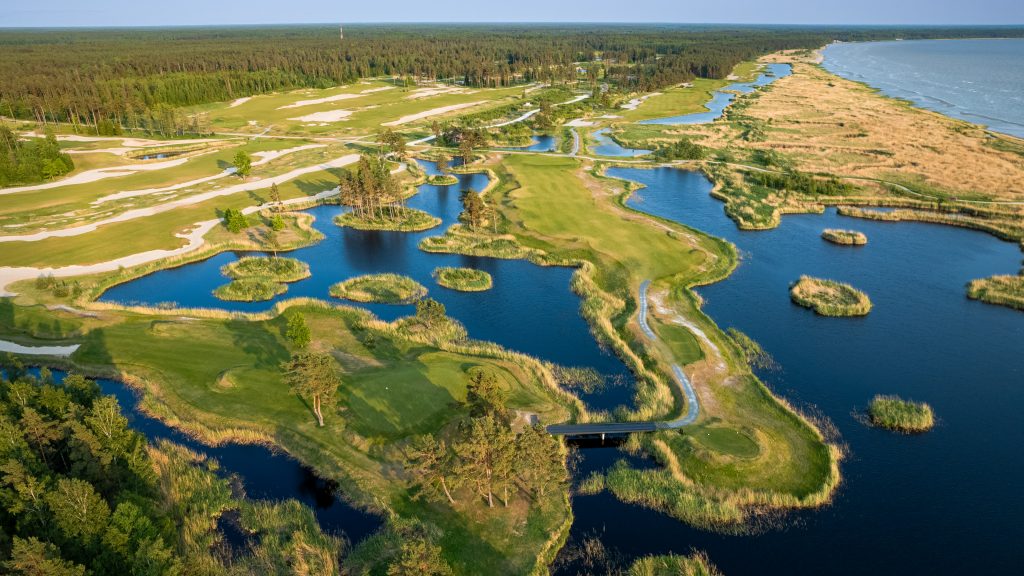
There are no traditional tee boxes, nor any second cuts along the fairways. All grass is cut at fairway height, which in links style is quite short. It makes it very flexible for the greenkeeper, as he can set the tees where it best suit today’s conditions. If there’s a lot of headwind, he can correct for that by moving the tees forward, and vice versa. If there is a pro tournament going on, you can easily make the course a good bit longer.
If you miss both fairway and sand and end up in the rough, it is usually not a big problem to find the ball. The grass is, like on many links courses, tall but not very dense.
The first nine holes stretch a bit in from the coast, but the wind easily finds its way in between the sparsely scattered tall pines that border many of the holes. The trees are rarely in play but are a beautiful feature that contributes to the course’s natural beauty. Holes 7, 8, and 9 are the best holes with tricky placed fairway bunkers and some water in play, all to make game strategy more important than brute force.
Since we had an early start and the course today was sparsely booked, we took time for lunch in the company of the Swedish club manager Peter Nyberg after the first nine. Peter told us about the course’s history; designed by the Finnish golf architect Lassi Pekka Tilander, financed by the Swedish felt king Peter Hunt, and opened in 2015, and about the future; a new hotel with seven floors will be built so that you can stay right by the course. Do I need to mention that the food here was also of first class?












On the back nine, holes 10, 11, and 12 take us furthest from the clubhouse, to the course’s largest water hazard, a beautiful wetland with a combination of open water and small islands, all left as nature created it.
Hole 13 is a par-4 that is reachable for those of us who hit reasonably long. Reachable, but not without risk, as the areas around the green slope considerably, and it is difficult to get the ball to stop. Hole 14 is a short par-3 that takes us out to the coastline, with a green bordered by water on both sides and a well-placed pine near the line of play.

The final four holes all run right along the edge of the Gulf of Riga, open to weather and wind from the southwest, as well as for spectacular sunsets over the sea.
Holes 15 and 16 are relatively short par-fours, but since they are lined by water on both sides, precision is required. Hole 17 is a beautiful par-3, with a wall of tall pines right behind the green, a very beautiful framing.
The final hole is an almost 500-meter-long par-5. Both sides of the fairway are bordered by sand from tee to green. The left side is pine forest, right water. Actually, it’s not a difficult hole, it looks narrower than it is, but sand and water haunt you, and the wind makes it difficult to choose the correct line. And if you want to reach the green in two, it’s a difficult hole that will decide tournaments. An excellent final hole, with an elevated green clearly visible from the clubhouse terrace. When we finish the round, we feel like we have been ocean sailing. Well blown out but happy with what you have accomplished.
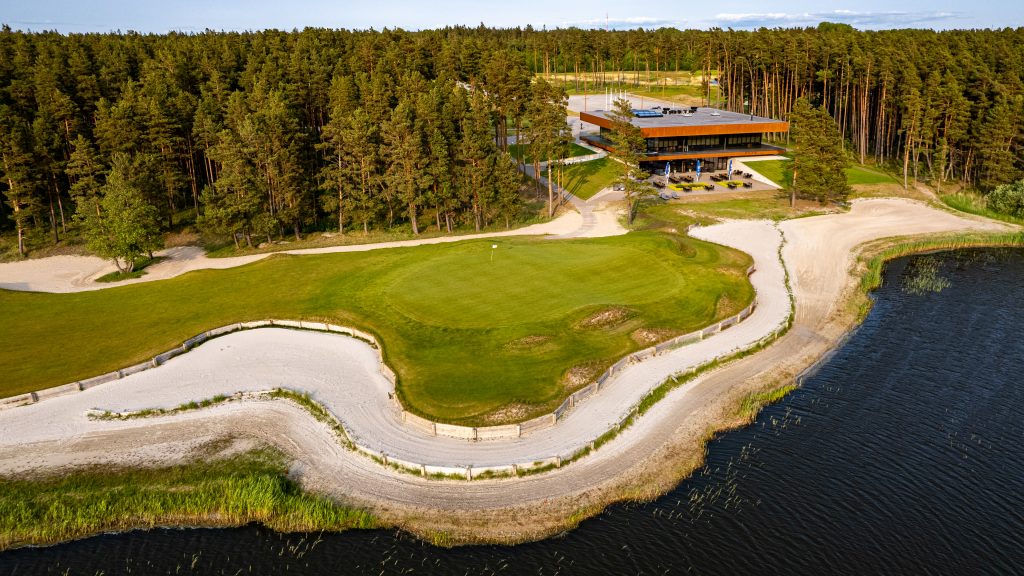
Pärnu Bay Golf Links is truly a unique links experience in northern Europe. We definitely recommend a visit (or two. Or three).
Pärnu – Estonia’s summer city
Pärnu is Estonia’s summer city, much like Brighton or Cape Cod, and this is where you want to be seen in the summer. A quiet and romantic city perfect for walks along avenues lined with Jugend houses, or perhaps on the long beach with chalk-white sand. But Pärnu is also famous for something else, its many spa facilities and that suited perfectly after the wind-battered golf round. We checked in at Hotel Hedon, and a massage in the hotel’s own spa was just what the doctor ordered. We were not disappointed, they know their massage here in Pärnu. The range of spas to choose from is large and the quality is high and even.
After golf and massage, we were ready for dinner. No Michelin restaurant this day, but what does it matter when you get a private room with your own chef? The food in Estonia never ceases to surprise, and a whole evening at Restaurant Villa Wesset in Pärnu offered yet another perfect food experience.
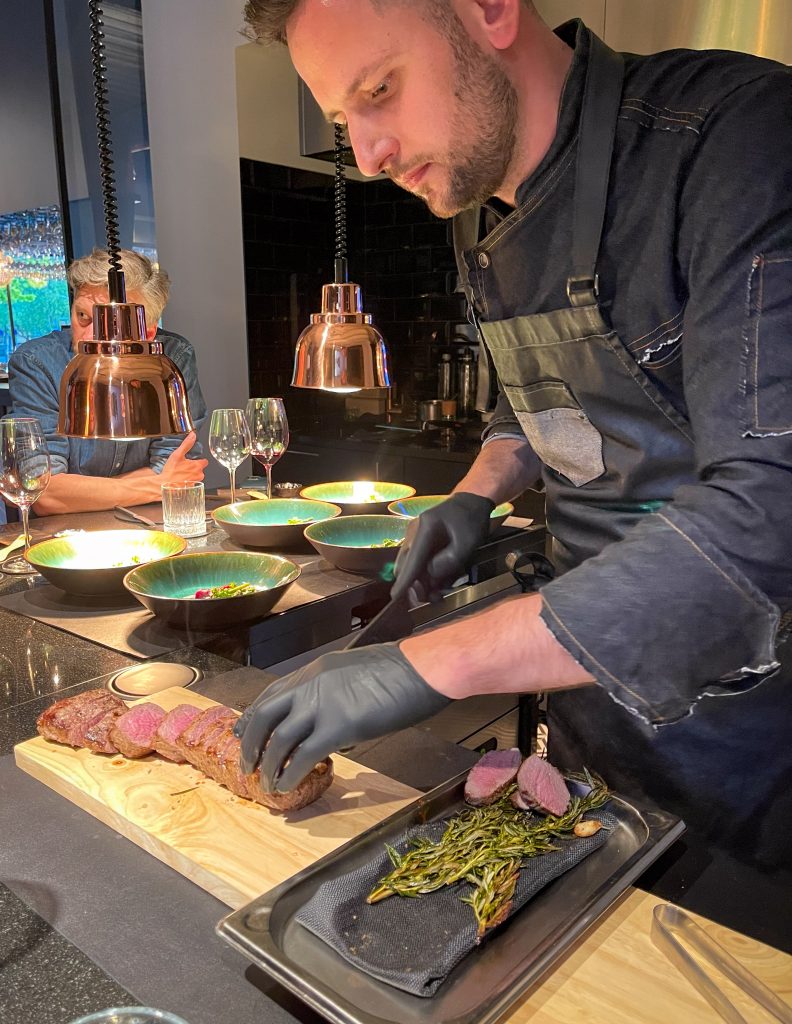
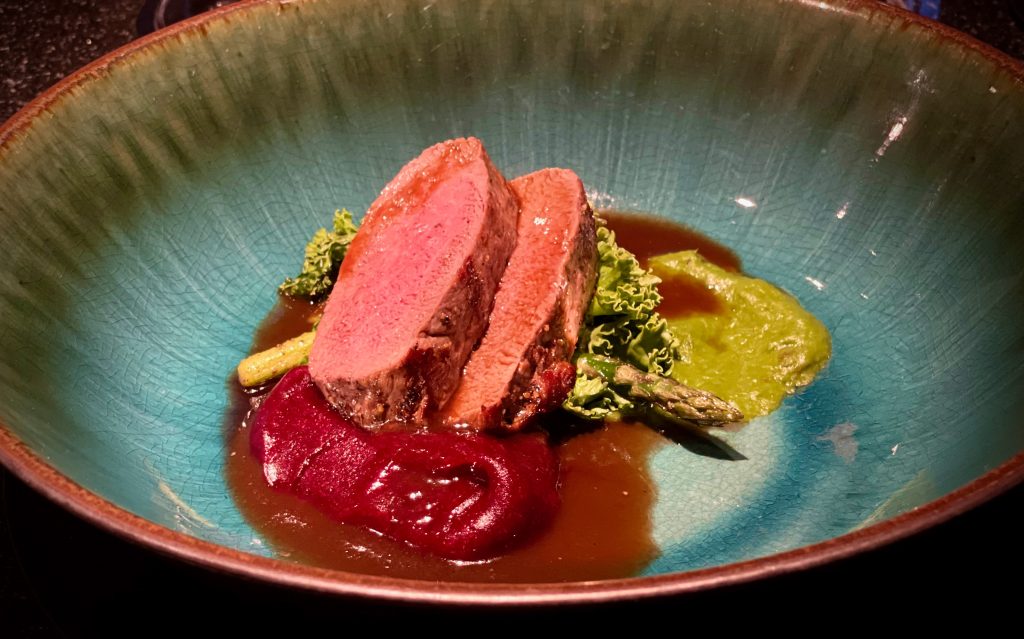
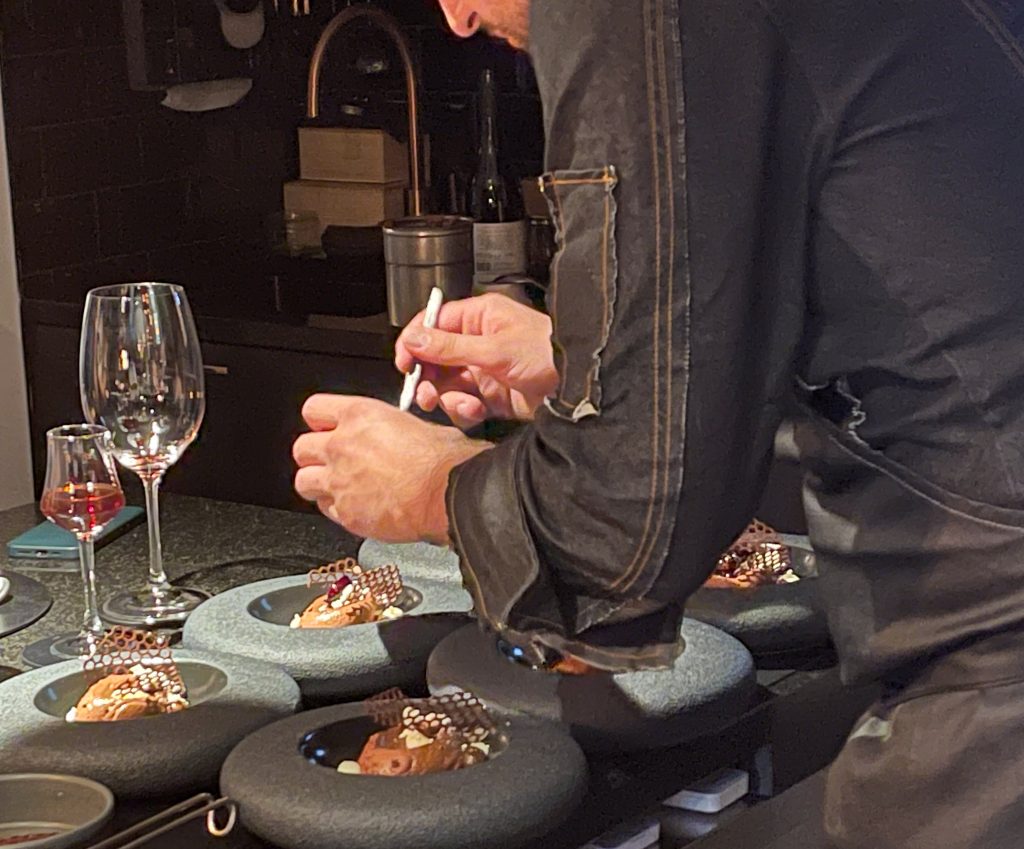
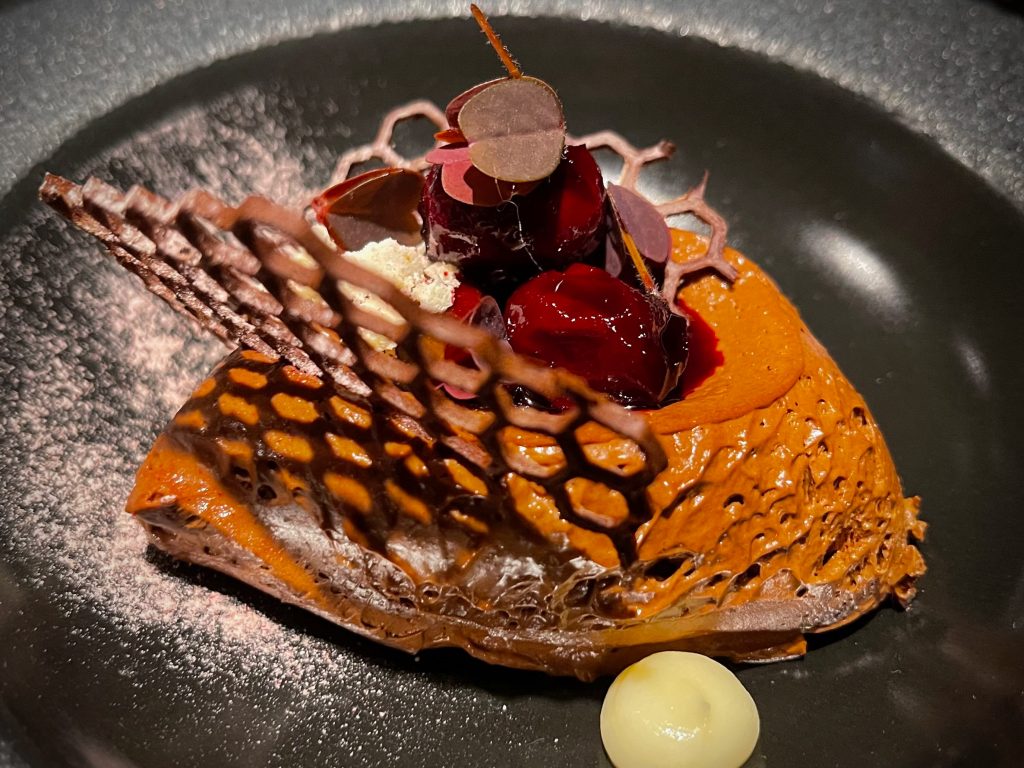
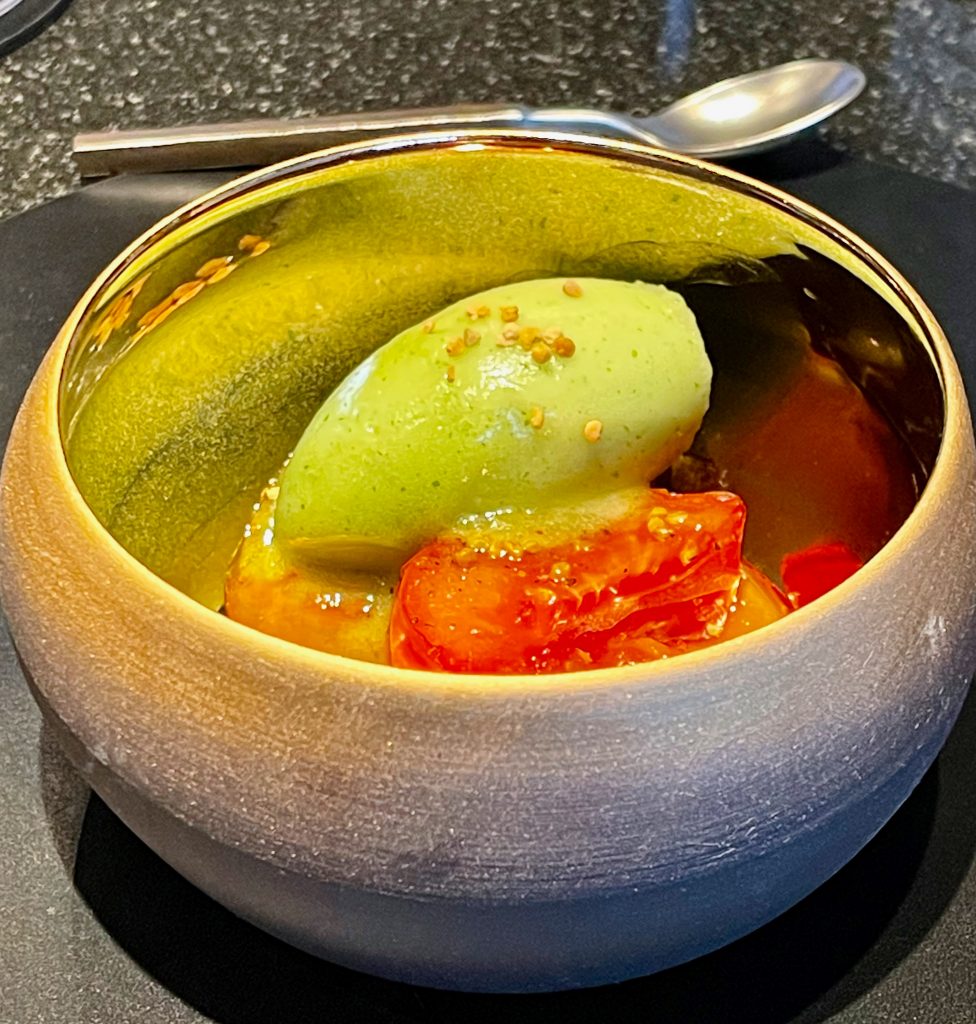
Estonian Golf & Country Club
Last out on this trip is perhaps the internationally best known of Estonia’s golf clubs, Estonian Golf and Country Club just east of Tallinn. The course is a park and forest course that lies on a slope down to the Gulf of Finland, almost directly south of Helsinki on the other side of the water. The course is very popular among Finns with 6000 Finnish green fee guests every year. After the short trip from Pärnu, we head straight out on the course.
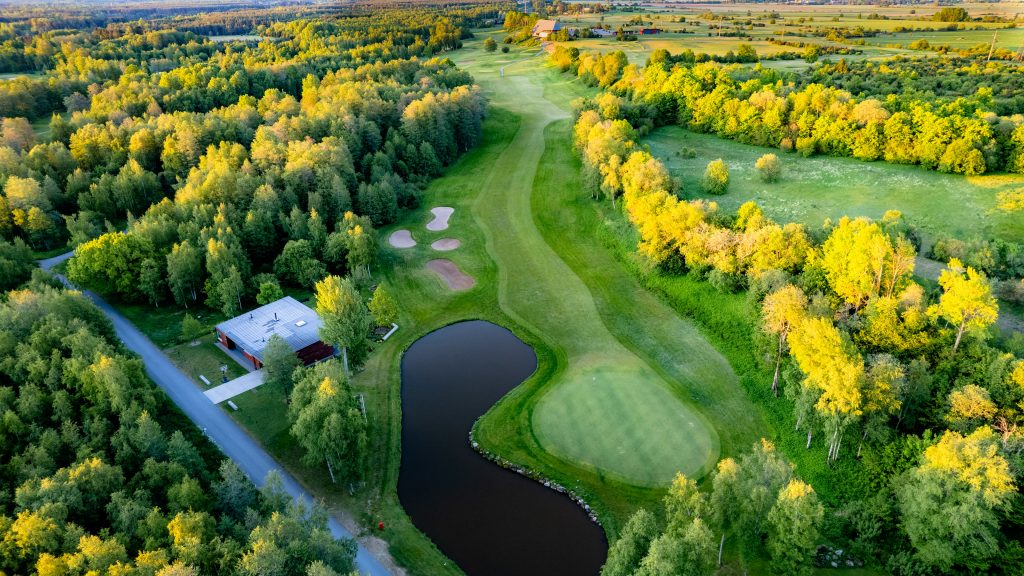
The first hole is quite difficult to gauge. A narrow, downhill par- in downhill, which also slopes towards the forest on the right side makes it difficult to figure out which line to choose. Once you get down to the green, the hole opens up and you understand better how you should have aimed. Study the course guide carefully, and feel free to ask the starter for advice.
Holes two and three take us through the forest down to the shore of the Gulf of Finland, where the course opens up and becomes more of a seaside course. The long par-four hole that follows is rated as the hardest on the course, with water in play, and exposed to northerly winds.








Holes 6 and 7 are played back and forth in the center of the course, surrounded by forest and with large waste areas separating fairways. Eight and nine take us uphill, surrounded by wooded areas, back to the clubhouse.
The second nine starts with a short par-3, and the following holes take us again through the forest down to the open areas along the water. When you have holed out on 14, you will come to a long, narrow suspension bridge over the river Jägala. But don’t worry, you don’t have to cross the bridge.
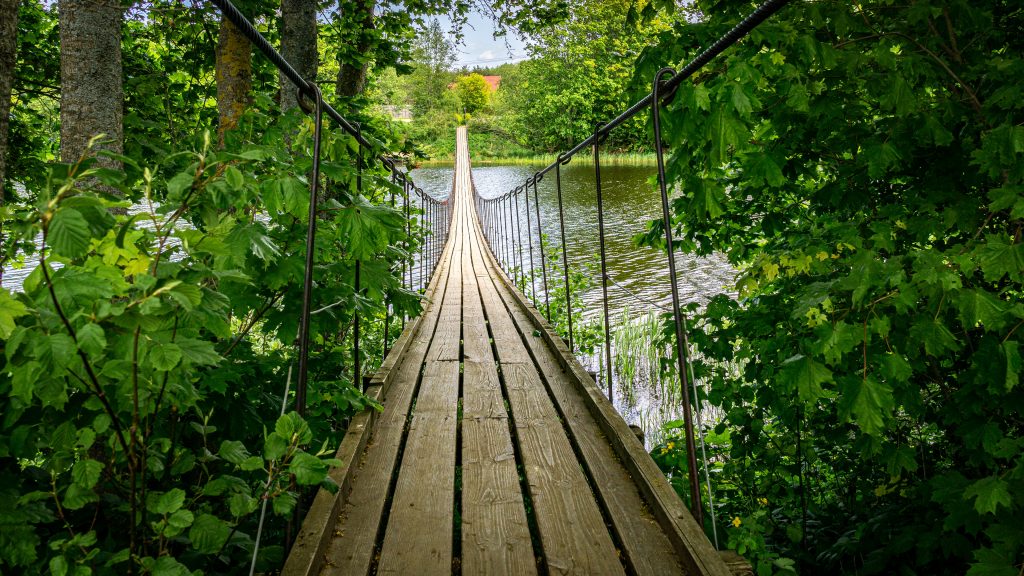
Hole 15 is the longest and second hardest hole on the course. It is also the hole that is closest to the Gulf of Finland, and it also has water on the left side. When the wind comes in from the northwest, it is a real challenge. Holes 16, 17, and 18 take us again through the forest up to the clubhouse. The final hole is long, over 500 meters from the back tee, and also steeply uphill. A good finishing hole, with the green located just below the clubhouse.
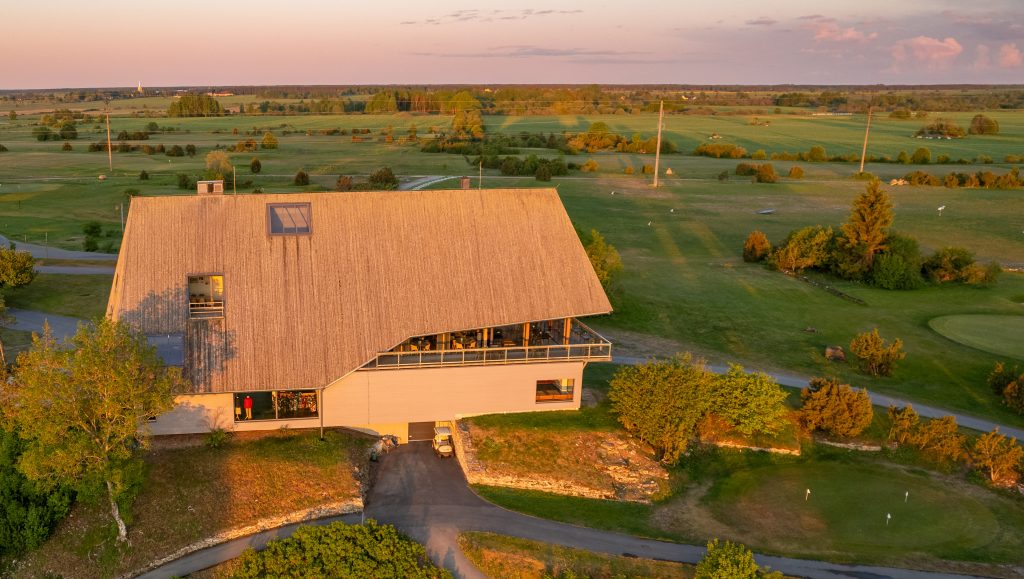
The majority of the holes are surrounded by woodland, providing a pleasantly secluded impression as if one is alone on the course. However, the open holes along the water quickly dispel that feeling. They are the most challenging and arguably the finest holes on the course.
After completing the round, we enjoyed lunch at the clubhouse. Restaurant Da Vinci is perhaps the most exclusive among the golf restaurants we visited on this trip. The food and service were excellent, as was the view. Well worth a visit, even for non-golfers.
Positive Surprises
In summary, it is not an exaggeration to say that Estonia truly delivers. The compact and central airport ensures that minimal time is wasted on the journey there and back, allowing for ample golf in just a few days. Tallinn is a compact city with both a port and an airport practically in the middle of the city.
Accommodations are always centrally located, and everything is within close reach. Besides golf, there’s much else to explore for those interested, and for those who simply want to unwind after golf, a first-class spa experience awaits.
Of the three clubs, Niitvälja perhaps offered the most surprises. We knew beforehand that Estonian and especially Pärnu Bay were top-notch courses, but Niitvälja truly impressed us with a course in excellent condition. Club manager Aivar Riimets has invested heavily in elevating the course’s quality, and he has certainly succeeded. The ambition level is high, with the next goal being to become one of Europe’s premier courses, and he’s well on his way.
Yet, perhaps the most astounding surprise of the trip was the cuisine. The dinners we enjoyed in Tallinn and Pärnu were truly world-class, and the lunches served at the golf clubs were perfectly prepared and seemingly tailored for hungry golfers. Estonia has truly become a culinary destination to reckon with. Excellent golf and top-notch food, what more could a golfer desire?
